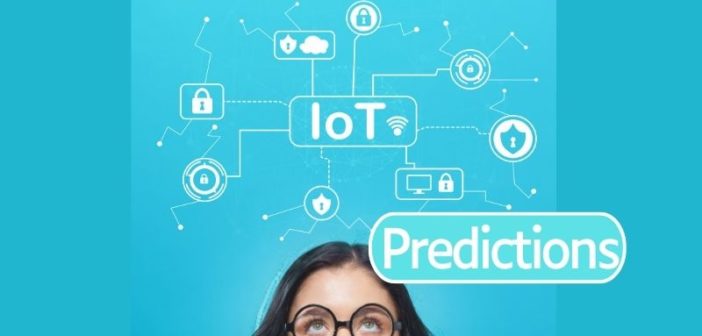The Internet of Things (IoT) is the network of physical objects embedded with tech that allows them to connect, monitor, analyze, and exchange data over the Internet or other communication networks. There is a wide variety of technologies involved in IoT, and these connected devices are in almost every industry.
Because IoT is everywhere, we should all have a base knowledge of what is coming in 2024. That’s why Digital IT News has gathered the following expert IoT predictions. We hope they help you make informed decisions about the connected devices you want to use this year.
1. A Paradigm Shift to The Age of Open Systems
In 2024, the IoT industry is poised for a paradigm shift, heralding the Age of Open Systems. Breaking away from the long-standing practice of private companies locking customers into their proprietary products, this year marks a decisive turn towards open interfaces, extendibility, and compatibility across vendors. Spearheaded by trailblazers like Home Assistant and ThingsBoard, the movement is gaining momentum especially in the B2B field of IoT — fueled by buyer frustration with restrictive ecosystems. 2024 will stand out as the year when IoT embraces collaborative innovation, transparency and customer-centric flexibility. – Fabian Kochem, Head of Global Product Strategy at 1NCE
2. More Organizations Will Adopt IoT Risk-first Strategies
Organizations across industries are depending on increasingly vast fleets of IoT devices for everything from how a hospital system delivers patient care to manufacturers’ complex operations. However, these IoT and IIoT devices come with thousands of new reported security vulnerabilities each month, a huge challenge for cybersecurity teams (and budgets). In 2024, I think we’ll see more organizations approaching this IoT challenge by adopting risk-first strategies, and utilizing IoT device visibility to prioritize the 5-10 percent of vulnerabilities that represent a true immediate risk considering their use cases, network configurations, and common cyberattacker practices. For organizations with limited budgets, this approach will optimize resources, and results. – Shankar Somasundaram, CEO of Asimily
3. Increased Data Transfer Speed
Whether talking about how our products perform for our customers or how quickly I see updates on pitch counts during a baseball game, “fast data transfer” is never fast enough. As we continue to embrace IoT and different forms of augmented and mixed reality, the need for faster speeds is only becoming more important. As private and public organizations collaborate to accelerate the deployment of 5G, currently the fastest wireless technology, I look forward to seeing which approach wins the next race. Many assume 6G will be the obvious next big thing, but technologies like Li-Fi (uses light waves instead of radio waves) and terahertz (THz) communication (which operates at higher frequencies and could provide even faster data transfer speeds). Of course, speed is only part of the story. While still early, quantum communication is promising in terms of providing methods that are dramatically more secure and could be virtually ‘unhackable. – Frank Gartland, Chief Product and Technology Officer at Skillable
4. Increased Adoption of Fleet IoT Management Platforms & Tech
Businesses are waking up to the fact that it’s not petrol, diesel or electricity that powers fleets — it’s data.
Those who have already invested in technology and IoT platforms to manage their fleets are already better off. Fleets that have already invested in connected data platforms are better able to identify which routes, vehicles, and tasks are best suited to the electrification of their fleets. They’re also using these same fuel-agnostic systems to identify other technologies that will lead to fleet decarbonisation. It’s now up to the rest of the industry to play catch-up or risk being hit with a double whammy — falling behind on electrification plans while being unable to manage sprawling fuel costs. – Philip van der Wilt, SVP and GM EMEA of Samsara
5. Expansion in Industrial IoT
Industries may increasingly leverage IoT for improved efficiency and productivity. Expect a surge in Industrial IoT applications, including predictive maintenance, real-time monitoring, and supply chain optimization, across manufacturing and other sectors. – David Idle, Chief Product Officer at Bigleaf Networks
6. Enhanced Patient Monitoring and Personalized Care in Healthcare
One of the most significant impacts of IoT in healthcare is the revolution in patient monitoring and personalized care. IoT devices, ranging from wearable health monitors to smart beds in hospitals, can continuously collect vital health data. This data, when analyzed, can provide real-time insights into a patient’s health, enabling healthcare providers to tailor treatments and interventions more effectively. Imagine a world where your health monitoring is as continuous and pervasive as the technology in your smartphone, constantly providing data to fine-tune your healthcare needs. Expect the upcoming year to show revolutionary IoT growth in the healthcare sector, where the use of integrated monitors in collecting real time patient data promises to improve personalized treatment. – Angel Vossough, CEO at VinoVoss

